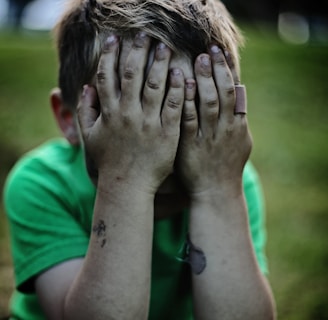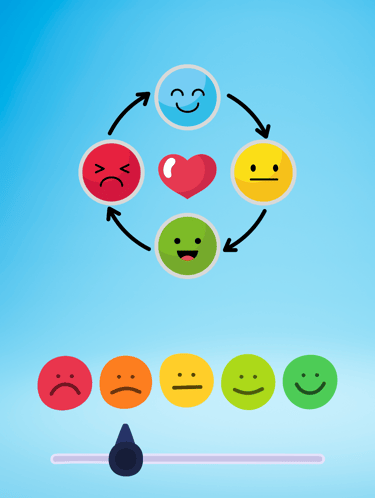Supporting Children Through Big Emotions
Sometimes children have those big emotions that can be difficult to navigate. Yelling and screaming because you said 'no' to the candy bar or crying because other children didn't want to play with them. How can we help our littles with these emotions. Read my blog for some tips and tricks that I have tried or seen work in a child care setting.
Tiana Conway
3/12/20254 min read


Children are constantly learning and absorbing information like little sponges. A part of this learning is experiencing emotions, but children don't always have the tools to help navigate these emotions. Just like us adults, children might not know how to handle what they are feeling or even why they are feeling it. That is why it is so important for us - adults - to come from a place of understanding and try to empathize with what they are feeling. I know how tough this can be, especially when the screaming, crying, or hitting has been going on and on. It can be incredibly tiring for parents, families, and caregivers to navigate children's emotions while trying to keep their own in check.
I have been guilty of not always saying the right words or doing the right things in the moment. I can guarantee that this will happen again, because I am human and humans don't always say or do the right things, we make mistakes. It's okay to make mistakes but the most important part of making a mistake is taking responsibility for it and learning from it. For example, if your child has been refusing to come and sit for dinner and it has been going on for twenty minutes and you finally snap and yell, "if you don't come and sit your butt down then you will be going to bed hungry tonight!" I totally get it, it can be frustrating when you try to explain, reason, compromise, barter, and nothing is working. It's okay to make this mistake as long as we take responsibility for it and let our child know that it was wrong for us to react in this way and that we are sorry. The best way for children to learn to regulate their own emotions is through role-modeling. So, if we have tools to regulate our own emotions it will help children to regulate theirs. We all say and do things that we regret, and although we can't take back our words or actions, we can make amends.
Although the biggest thing we can do to help children with their emotions is role-modeling and being in touch with our own, there are some other tips and tricks to try:
Calming Techniques: using things like five-finger counting - where the child or you traces their fingers along the fingers of the other hand and every time you get to the tip of the finger you tell them to take a big breath in and as you trace down the finger they exhale, repeat until you or they have traced the whole finger. Another strategy is "smell the flower, blow out the candle" breathing - this is where children take a deep breath in as if they are smelling a flower and then a deep breath out to blow out the candle (they can use their finger to be the candle).
16 Free Finger Tracing Calming Cards - this is a great resource for finger tracing activities that can help children find some calm.
Create a quiet/calming corner: having a nice quiet area that your child can go to regulate themselves can be so helpful. Quiet corners are so much more effective than punishments. When you punish a child, they do not always draw a connection as to why they are being punished. You can set-up lots of pillows and blankets, if you have a child tent that is always a wonderful thing to use. You can fill the area with things you know they like, but make sure they are not overly stimulating. Books, puzzles, fidget toys, blocks, Play-Doh, colouring materials, paints, stuffies, and calming lights are just a few options of what you can use to create the quiet/calming corner.
Books & Activities: although I mentioned books in the calming corner, they deserve a category all their own because they can be such a powerful tool in helping children self-regulate. Children's books that talk about emotions and feelings can help children to understand their own emotions more because it is something they can visually see and interact with. You can always attach an activity to reading the books, an example of this (and one of my favourites) is reading The Colour Monster by Anna Llenas and once you have read it you do a pom-pom sorting activity and talk about what each emotion stands for in the book. As you read the book it can be helpful to ask a child if they have ever felt that emotion and if they remember what made them feel that way. This way children can make connections to what they are feeling and understand why they are feeling that way.
These are only a few tips and tricks that can be used to help children handle their emotions that I have found effective. One of the top resources I recommend is The Institute of Child Psychology. They have so many resources to help parents, families, and caregivers help children regulate their emotions.
Always remember that you are doing your best, even when you make mistakes. It can be a tough and trying time when children's emotions escalate. Remember to take care of yourself and be aware of your own emotions. This is how you can be the best version for your children or the children you work with. Nobody can do it right all the time so give yourself some grace.
Remember to please follow me on my social media accounts (you can find the links on the bottom of the page) and come back every Wednesday for your weekly dose!
Hope to see you all back here soon!
Tiana






Print-A-Play
Engaging printable activities for children and families.
Contact
support@printaplay.com
© 2025. All rights reserved.
